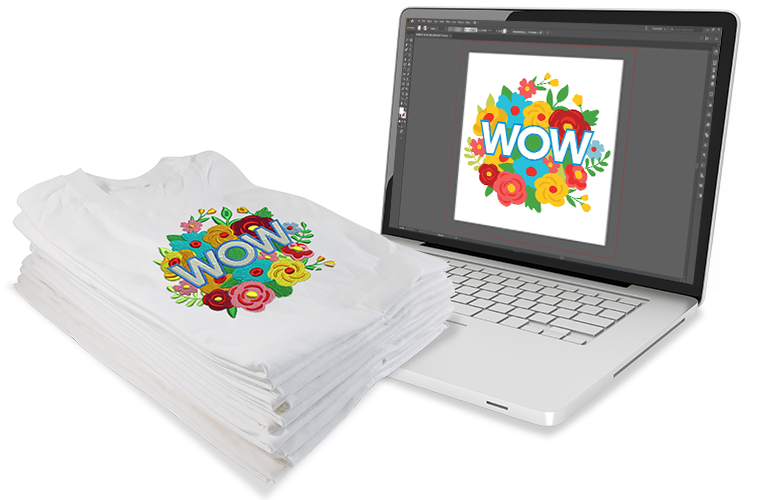Cost Effective Digitizing for Embroidery: Precision and Information
Streamlining the Art of Embroidery Digitizing: Step-by-Step Guide
As modern technology proceeds to advancement, the digitization process has come to be much more available, allowing fanatics to bring their complex styles to life with simplicity. In this overview, we will certainly untangle the complexities of needlework digitizing, damaging down each action methodically to improve the procedure and empower both beginners and experienced embroiderers alike.
Comprehending Embroidery Digitizing Software Application
Needlework digitizing software works as an important tool for changing complex designs right into electronic layouts suitable with needlework machines, facilitating exact sewing and modification. This specific software permits users to import different photo file formats, such as JPG or PNG, and transform them into needlework machine-readable formats like DST, EXP, or PES - Digitizing for Embroidery. By using features like stitch modifying, rug choices, and string color option, digitizing software program makes it possible for customers to regulate every element of the layout process
Furthermore, advanced embroidery digitizing software program provides devices for creating complex styles, adjusting stitch thickness, and including intricate details. Users can also preview the layout prior to stitching it out, making certain accuracy and lessening mistakes. In addition, numerous software application offer automated attributes that assist improve the digitizing procedure, saving time and initiative.
Understanding the capacities of embroidery digitizing software is necessary for attaining high-quality lead to needlework jobs. By grasping this tool, needlework fanatics and experts can unleash their imagination and bring complex designs to life with precision and efficiency.

Picking the Right Style Documents
After familiarizing yourself with the capacities of needlework digitizing software, the following vital action in the process is picking the best design documents for your task. Digitizing for Embroidery. When picking a style documents for embroidery digitizing, it's essential to consider the intricacy of the layout, the size of the last item, and the kind of fabric you will certainly be functioning with
For detailed layouts with fine details, a high-resolution photo or vector documents is recommended to guarantee that the embroidery maker can precisely reproduce the layout. Additionally, the size of the final item plays a substantial role in choosing the best design file. Bigger layouts may call for higher resolution data to keep quality and sharpness.
In addition, the kind of material you will certainly be stitching on affects the option of style data. Different materials might need changes in the layout file to guarantee that the stitches are correctly straightened and the design appears as meant. By meticulously choosing the best design documents based upon these variables, you can establish yourself up for a successful embroidery digitizing process.
Digitizing Tools and Strategies
Utilizing specialized software application and precision techniques, digitizing tools are crucial in transforming complex styles into embroidery-ready data. Needlework digitizing software application, such as Wilcom, Hatch, or Embrilliance, gives the required platform to convert artwork right into stitch information. These programs offer features like stitch modifying, rug choices, and lettering tools to guarantee the style equates effortlessly onto textile.
Among the vital strategies in digitizing is creating a clear path for the embroidery device to comply with. This includes digitizing each component of the design with precision, determining stitch types, densities, and instructions. By utilizing tools like digitizing tablets or software-specific plugins, embroiderers can accomplish a high degree of accuracy in their digitized designs.
Moreover, grasping the art of padding sewing is critical for creating high quality embroidery. Underlay sewing stabilizes the textile and develops a structure for the style, making sure that the end product is both aesthetically go right here enticing and lasting. By understanding these digitizing tools and methods, embroiderers can elevate their craft and bring elaborate styles to life with accuracy and effectiveness.
Customizing Stitch Kinds and Instructions
Having actually established a foundation in digitizing tools and strategies, an important facet beforehand needlework workmanship hinges on tailoring stitch kinds and directions with accuracy and objective. The selection of stitch types can substantially influence the total appearance and appearance of the stitched layout. Satin stitches, understood for their smooth and shiny finish, work well for creating boundaries and text. On the other hand, fill stitches are perfect for covering bigger areas effectively. By strategically integrating these stitch kinds, embroiderers can achieve deepness and measurement in their styles.
Moreover, the instructions of stitches plays an important check this role in boosting the aesthetic allure of the final needlework. By exploring with different stitch angles and patterns, embroiderers can bring their styles to life with amazing information and complexity.
Screening and Refining Your Digitized Layout
To make certain the accuracy and quality of your digitized design, comprehensive testing and refinement are essential actions in the needlework digitizing procedure. Once you have completed the digitization of your layout, it is vital to evaluate it prior to waging the actual needlework. Checking permits you to determine any potential concerns such as thread breaks, sew thickness troubles, or layout distortions that might impact the final result.

After testing, it is important to improve your digitized style based upon the responses from the examination sew-out. This might entail tweaking sew setups, readjusting thickness, or making adjustments to the general design to attain the preferred outcome. By repeating via testing and refinement, you can adjust your useful source digitized layout to excellence prior to moving on with the actual embroidery procedure.
Conclusion
In conclusion, understanding the art of embroidery digitizing calls for a detailed understanding of the software application, selecting the appropriate style file, making use of digitizing devices and methods, personalizing stitch types and instructions, and screening and fine-tuning the digitized layout. By adhering to these actions, embroiderers can streamline the digitizing procedure and develop high-quality stitched designs with accuracy and efficiency.